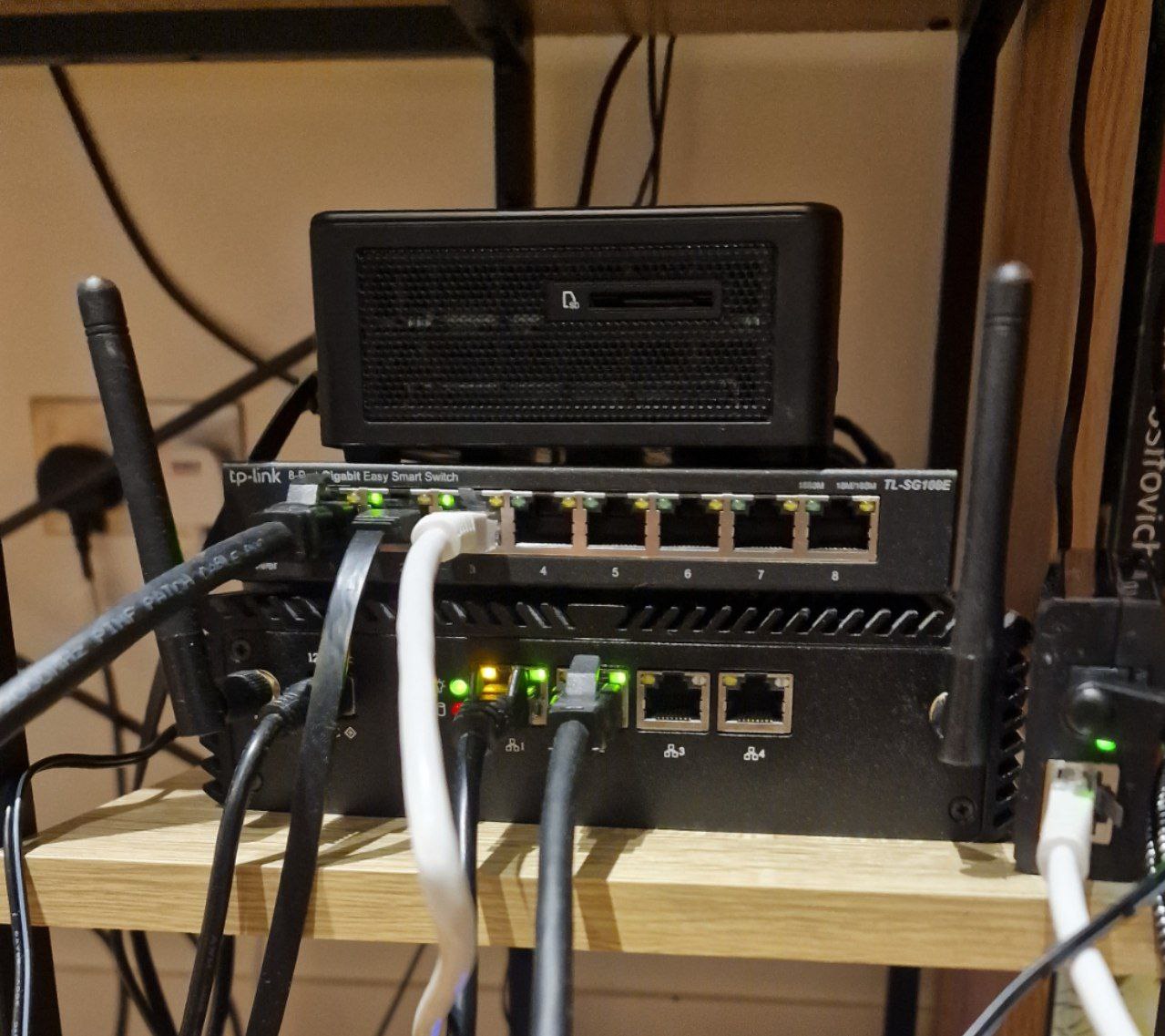Homelab Update 2024
Why a Homelab?
This is just a small update on my current—and very humble—homelab setup. When I visit YouTube and search for homelabs, I see some really intricate, well-planned setups that look more like someone has transplanted a segment of a data center into their basement. Not only are these sorts of homelabs pretty unaffordable for most, but they are also time-consuming and ridiculously over-engineered for most people who are only looking to do the following:
- Improve the security posture of their home network
- Have a safe way to play with new technologies
- Potentially have a playground for red team exercises (like attacking Active Directory)
- Have some means of creating VLANs to segment off various parts of their network for security purposes (i.e., you want to spin up a Tor hidden service to experiment, but don’t want the node running that service exposed to the rest of your network, or you want an isolated VM to sandbox malware samples.)
- Run shared services over the network, such as NAS, etc.
What’s in my homelab?
So basics first, my homelab is pretty cost-effective and minimalistic:
-
Fanless PC: I can no longer remember exactly which device this is, but you want to set aside roughly 250-300 USD for this. We are going to run pfSense, and you can, of course, get Netgate’s hardware. This is a bit pricey, in my opinion. You can get almost any fanless PC with the right specs for the traffic you expect pfSense to be handling on your home network.
-
Switch: You will want a managed switch, which will allow you to do VLANing. I am not sure if the TP-Link switch I own allows me to do LAG (link aggregation), but this is not essential unless you are running services that require redundancy (which you really shouldn’t be doing for a homelab of this nature). However, it is always nice to have the option to do things like LAG and other advanced networking so that you can experiment at home with networking concepts you will find in almost any corporate environment. The switch I own is the TP-Link Managed Network Switch 8-Port Gigabit, Support QoS VLAN IGMP Snooping, Network Monitoring through Web Interface, 3.68 W (TL-SG108E)
-
Mini server: At the very top of the stack in the photo is an Intel NUC 11 Mini PC, with an i7-1165G7 CPU, 32GB RAM, and a 1TB SSD. NUCs, if you can still get your hands on one, are reliable, small, relatively silent, workhorses. I have two of these on my network, and I have been using them for several years and find them to be worth every penny.
Apart from the above, you will likely want an AP (Access Point), as you will be using your home router in modem mode (i.e. it will only bridge your pfSense firewall to the internet).
